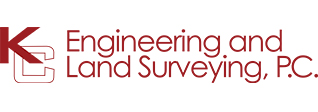KC Engineering and Land Surveying, P.C. (KC), a leading provider of engineering and land surveying services in the New York State and City area, is proud to celebrate our 42nd anniversary. Since our founding in 1983, KC has grown from a small business to a thriving firm with over 100 employees. KC has consistently demonstrated our commitment to excellence in the field of engineering and land surveying. Our firm has been recognized for our outstanding work on numerous occasions, including the 2021 AGC New York State Excellence in Partnering Award for Informal Partnering and the 2022 ACEC New York Diamond Award—Transportation for the New York State Thruway Authority (NYSTA) Design-Build Contract D800002 TA 19-1: Cashless Tolling project.
One of the key factors in our success has been our ability to adapt to the changing needs of the industry. KC has continually invested in new technologies and equipment, and our experienced professionals’ staff are always up to date on the latest certifications and courses. As a result of our commitment to excellence, KC continues to be awarded numerous projects as a prime and subconsultant. KC has also been involved in a number of high-profile projects, including being the Lead Designer on the New York State Department of Transportation (NYSDOT) I-81 Viaduct - Phase 1, Contract 2 project. In addition to our professional achievements, KC is also committed to giving back to the community. KC supports a number of local charities and organizations.
At KC, we are grateful for the support of our staff, clients, and subconsultants who we have collaborated with over the past 42 years. We look forward to continuing to provide exceptional engineering and land surveying services for many years to come. As KC looks ahead, we are excited about the opportunities that lie ahead. We are confident that we will continue to be leaders in the engineering and land surveying industry for many years to come. KC is committed to providing our clients with the highest quality services possible, and we are constantly looking for new ways to improve our operations. KC is thankful for the support of our staff, clients, and subconsultants we have collaborated with over the past 42 years. We look forward to continuing to collaborate with these individuals and organizations to achieve even greater success in the years to come.









